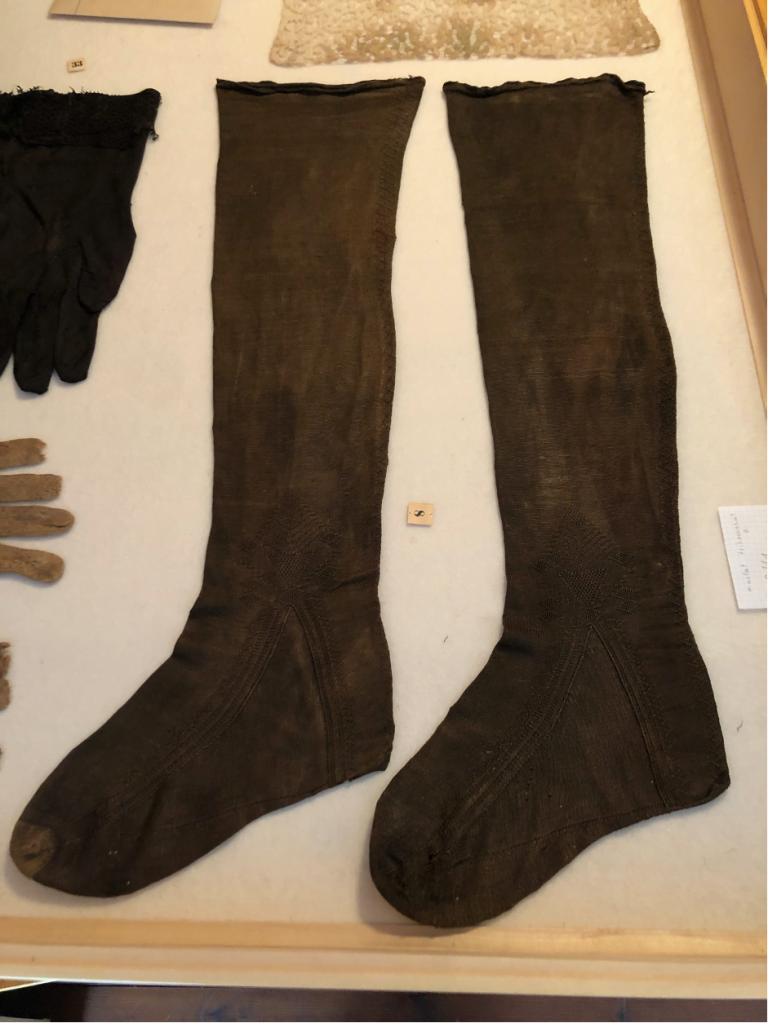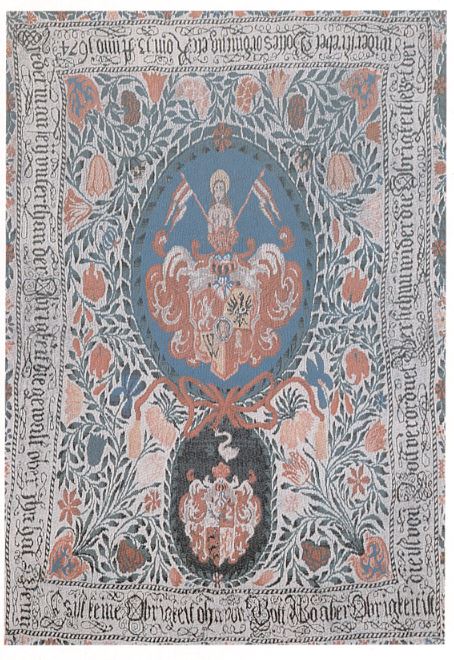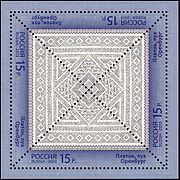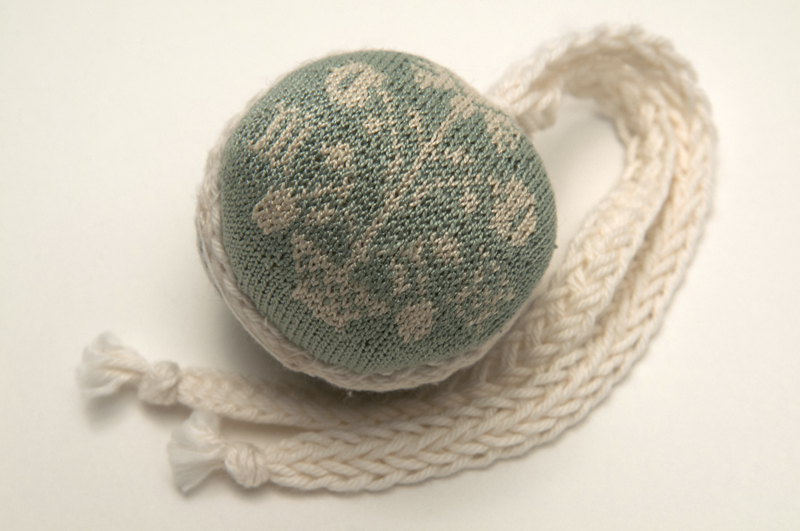This is the third in a series of four posts on the origins of and developments in hand knitting
17th century
By the 17th century Dutch knitters were specializing in embossed knitting – a technique that creates raised areas on the knitted fabric. In Sweden, both men and women were knitting, and in Denmark, entire families were carding, spinning, and knitting wool from their own sheep.
The oldest example of Danish knitting that has been found dates to this time, and is an indigo-dyed wool fragment knitted in a damask pattern with eight-pointed stars. It was from a garment known as the nattroje, a tight-fitting women’s nightshirt worked in patterns of purl stitches on a plain background.
In Germany, stockings were found in the coffins of Pomeranian princes. Two appear to have been a pair, and were dated to 1603. They were knitted in silk, in stockinette stitch, without patterning. They may have been imported from England or Western Europe, but also could have been made locally.
At the same time in Iceland, knitters were producing stockings and mittens that were essential both for local use and as exports. Color knitting in Iceland is thought to date from this time, as seen in a fabric fragment worked in a 2-color Fair Isle-style border.
Bratislava, Slovakia had established a hand knitting guild by the early 1600s, requiring a master knitter to complete a beret, a woolen shirt, socks, and a patterned carpet, in 13 weeks.
In 1655, the earliest known written instructions for a knitted garment (knitted stockings) appeared in a book on the history of medicine, published in England.
Two-color patterning found in Estonia in the latter part of the 17th century indicates a high level of skill among Estonian hand knitters of that time. Knitting had largely replaced nålbinding, although the single-needle technique was still used by some mitten makers for another century.
Also during the 17th century, Alsace and Silesia became the major centers of the craft of carpet knitting.
18th century
Knitting designs, techniques, and finished products were making their way around Europe and farther afield by the beginning of the 18th century. The technique of knitting pullovers was established in Finland by this time, and it has been noted that some patterns were quite similar to designs from other countries. Sweaters were being exported from Iceland by the 18th century, along with other hand knits that were traded on both sides of the Atlantic.
Orenburg lace shawls date to the early years of the 18th century when Cossack wives introduced a web-like pattern and traditional embroidery motifs to a traditional shawl shape. By mid-century a cottage industry had developed, and the shawls had developed into an art form by century’s end.
A white knitting craze developed in Europe as white cotton and linen became available mid-century, and led to heightened interest in knitting openwork lace.
In Germany in 1761, Susanna Dorothea Riegl published her Strikkemostre (knitting patterns), which may have been the first work of its kind.
By the end of the century knitting was practiced in the more genteel circles throughout England, aided no doubt by the appearance of early patterns books. Quaker knitted pinballs and pincushions dating from this era bore geometric patterns similar to needlework medallion samplers of the same period (Pinball pictured below is likely Canadian in origin).
Next up (final in series): Knitting in the 19th and 20th centuries
Sources
Buss, Katharina. Big Book of Knitting. New York: Sterling Publishing Co., Inc., 2001.
Coleman, Ava T. “How It All Began.” TKGA.com. Cast On August-October 2008: 12-13. 28 August 2016 https://tkga.site-ym.com/global_engine/download.asp?fileid=AC65D860-440E-4B58-B61D-5AA5D4FE9577&ext=pdf
Forte, Mary. “Fair Isle: A Quick History.” TKGA.com. Cast On February-April 2009: 10-11. 28 August 2016 https://tkga.site-ym.com/global_engine/download.asp?fileid=C803C6CC-8258-4801-AB91-8F38219A1AF7&ext=pdf
Gibson-Roberts, Priscilla A., and Deborah Robson. Knitting in the Old Way: Designs & Techniques from Ethnic Sweaters. Fort Collins, CO: Nomad, 2004.
Macdonald, Anne L. No Idle Hands: the Social History of American Knitting. New York: Ballantine, 1988.
Nargi, Lela. Knitting around the World: A Multistranded History of a Time-honored Tradition. Minneapolis: Voyageur, 2011.
Rutt, Richard. A History of Hand Knitting. London: B. T. Batsford Ltd, 1987.




